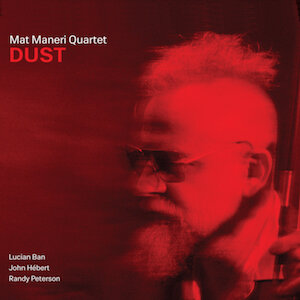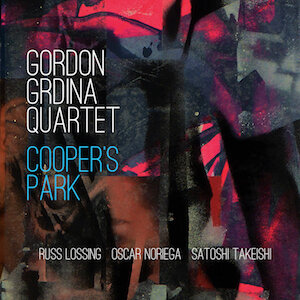Label: Mahakala Music, 2019
Personnel - Chad Fowler: alto sax, saxello; Kidd Jordan: tenor sax; Kelley Hurt: vocals; Chris Parker: piano; William Parker: double bass; Alvin Fielder: drums.
The multi-generational avant-jazz sextet Dopolarians was born from the predominantly Southern spirit of its members, who decided to record Garden Party in New Orleans. The group’s first effort, comprising six modern tunes that don’t neglect elements of the past, shape into a consistent, well-conceptualized program where free improvisation and disciplined incursions integrate in an extremely gratifying manner.
The veteran tenor sax player Kidd Jordan forms a supercharged frontline with the young alto saxist Chad Fowler, with vocalist Kelley Hurt alternating between focused teamwork with the horn section and spontaneous explorations in specific sections. The harmonic assistance is given by emerging pianist Chris Parker, who finds extra rhythmic support in two colossal pillars, bassist William Parker (no relation with the pianist) and drummer Alvin Fielder. Unfortunately, Dopolarians's future releases will never sound the same without the latter, who has passed away in early 2019. His perceptive drumming is well alive here and the opening piece, “C Melody”, confirms this thought. There is an organic blues-based sax/piano polyphony in movement, configuring an accessible dialogue full of motifs and inspirations that go from Ayler to Ornette. Chris Parker contributes significantly to the rhythmic frame through unrestricted delineations that tend to expand rather than stabilize. This is an impromptu exercise credited to Fielder, Jordan, and the two Parkers.
“Dopolaria” is the first of three tunes composed by Fowler to appear, and comes described as a love song inspired by a fragment of a Puccini melody. The dulcet piano/bass inception, complemented with understated brushwork, gradually fades to give place to sax/voice commotions. Soon after that, you’ll notice a delightful avant melodicism flustered by the eeriness of anxious arco bass and agitated piano whirls hinged on the nimble chord changes.
“Father Dies, Son Dies” and “Guilty Happy” are also Fowler’s creations that explore the interesting timbral qualities of the group’s instrumentation. The former, tense and fascinatingly offbeat, carries a Steve Lacy-like vibe with steeply sloping unisons, cymbal effervescence, and a few harmonic volleys arousing just the right amount of ambiguity. It’s a composition about impermanence and the inevitability of death, where saxello outcries and a reactive piano work in their own way to build rising momentum. In turn, the riff-oriented “Guilty Happy” possesses a mix of free folk and Afro Latin vibes promoting its infectious propulsion and suggesting an exciting crossing between Gato Barbieri and David S. Ware. Expect a wide range of hooks, squeals, explosive dissonances, and occasional gruff executions from the saxophonists.
Hurt’s “Garden Party” exudes poetry in its musical fervency, ending as a complete settlement with Fielder holding everything with brushes in the background, whereas Chris Parker’s snappy “Impromptu” achieves a radiant complexion fabricated with a bendable bebop flair and polyrhythmic feel.
Promoting diversity of sound, Garden Party is a record of dynamic invention and grandiose free aesthetic.
Grade A-
Favorite Tracks:
02 - Dopolaria ► 03 - Father Dies, Son Dies ► 05 - Guilty Happy








































